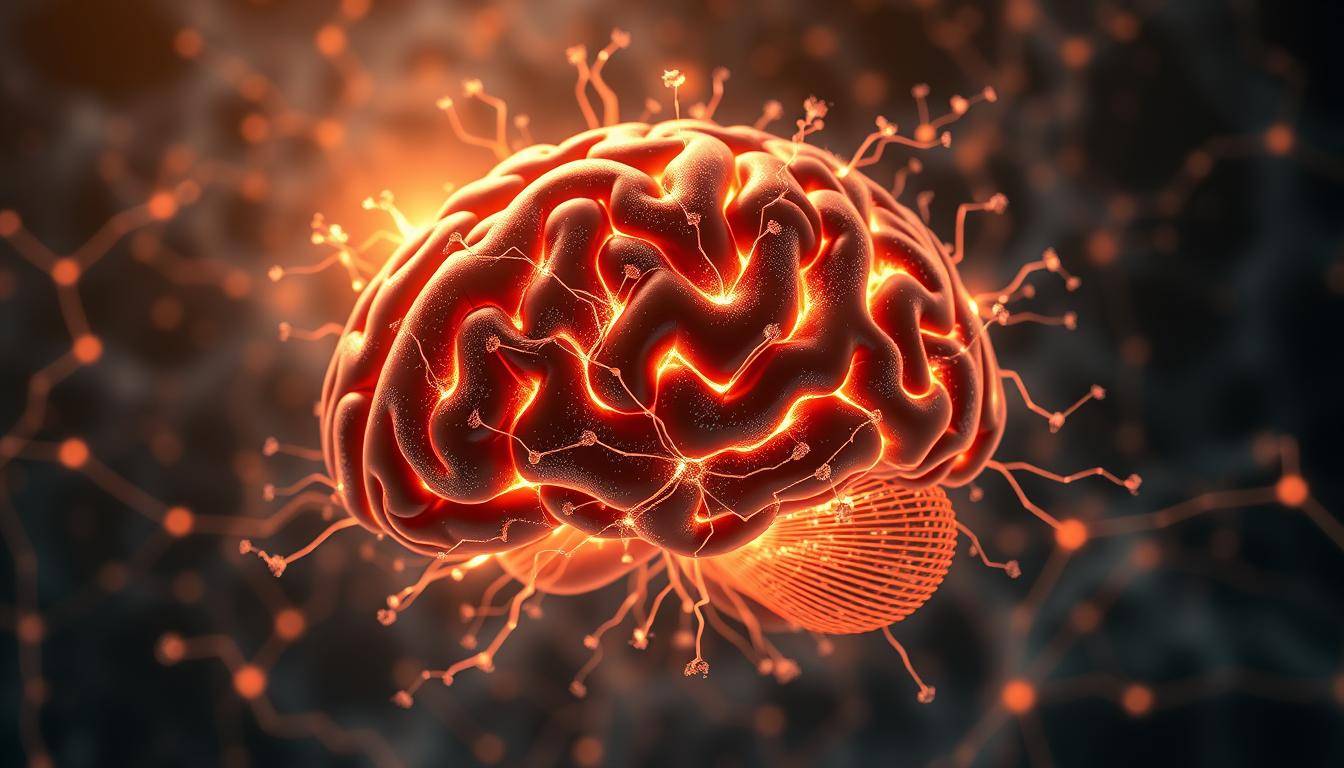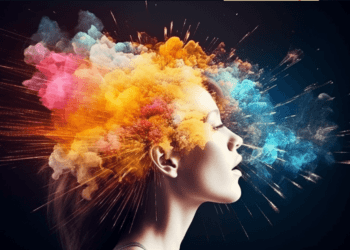“The brain can change itself. It is a living, plastic organ capable of transformations that were once thought impossible.” — Norman Doidge, psychiatrist and author. This powerful truth unlocks a revolutionary idea: your mind isn’t fixed. It’s designed to evolve.
Your brain’s capacity to reshape itself isn’t just science fiction. It’s biology. This natural gift — often called mental flexibility — lets you grow beyond old habits, learn faster, and adapt to life’s curveballs. Whether you’re mastering a skill or overcoming self-doubt, your neural pathways are always ready to rebuild.
Think of your brain as a dynamic network of roads. Every thought and action carves new routes. With practice, weak trails become highways. This process isn’t limited by age. A 60-year-old can develop new talents just as effectively as a teenager.
Why does this matter? Because it means your potential isn’t predetermined. Stuck in negative patterns? You can rewire them. Want to boost creativity? Your brain will comply. This adaptability isn’t a luxury — it’s your biological right.
Key Takeaways
- Your brain constantly reshapes itself based on experiences and focused effort
- Age doesn’t limit your ability to learn new skills or change behaviors
- Consistent practice strengthens neural connections like muscles
- Breaking old habits creates space for healthier thought patterns
- Mental flexibility impacts both personal growth and professional success
Introduction: The Power of Brain Rewiring
Every experience you have leaves a physical mark on your brain’s structure. This biological remodeling process — your mind’s natural upgrade system — works silently as you navigate daily challenges and learn new skills.
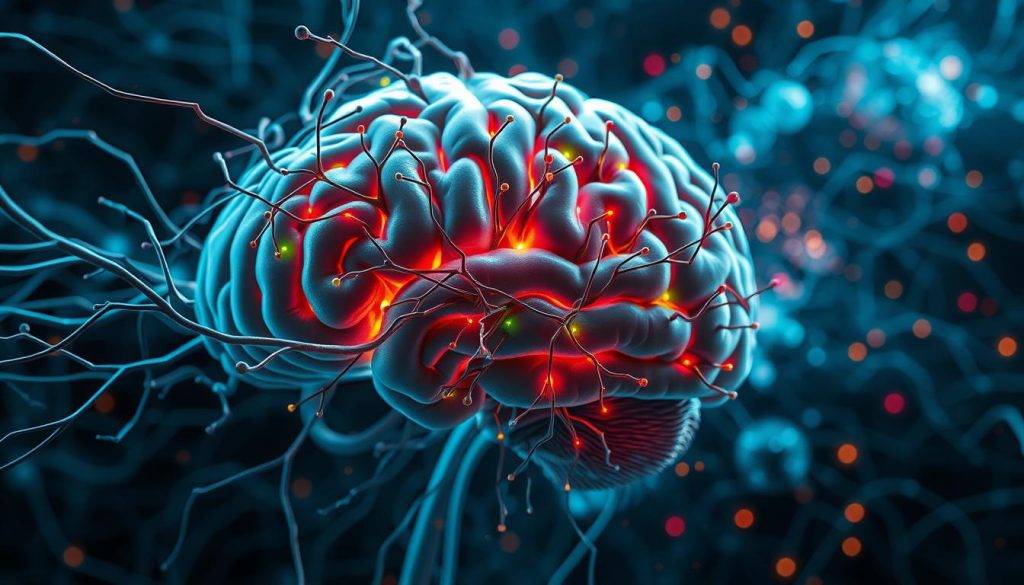
Defining Brain Rewiring and Its Impact
Brain rewiring isn’t metaphorical. When you master a language or break a habit, visible structural changes occur. Billions of neurons forge fresh pathways, while unused connections weaken. This morphological shift explains why consistent practice makes complex tasks feel automatic over time.
These physical transformations directly influence real-world outcomes. A study of London taxi drivers showed enlarged hippocampus regions after memorizing city maps. Your brain adapts similarly when developing expertise — whether learning guitar chords or emotional resilience.
The Evolution of Cognitive Flexibility Throughout Life
While peak adaptability occurs in your 20s, your brain remains moldable like warm clay. Young adults benefit from rapid neural growth, but older individuals develop strategic efficiency. A 70-year-old’s brain might process information differently than a 25-year-old’s — yet both can achieve mastery.
Three key phases shape cognitive flexibility:
- Growth phase (0-25): Rapid neural network expansion
- Consolidation phase (26-60): Specialized skill refinement
- Adaptation phase (60+): Compensatory pattern development
This lifelong progression means you’re never “too set in your ways.” Even after major neural changes post-60, focused training can rebuild mental agility. The secret lies in consistent, deliberate practice — your brain’s natural fertilizer.
Understanding Neuroplasticity and the Brain
Your mind operates like a living city — billions of specialized messengers constantly building new roads and updating communication systems. This biological infrastructure determines how you think, learn, and adapt to challenges.
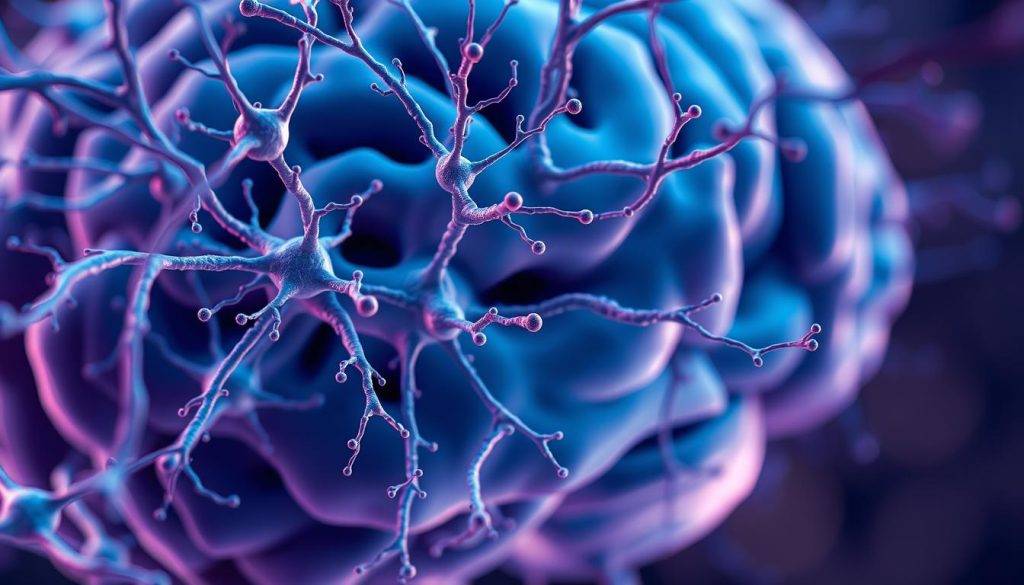
What Does “Neuroplasticity” Mean?
Neuroplasticity describes your brain’s talent for remodeling its wiring. Imagine nerve cells as construction crews — they forge fresh pathways when you practice a skill and dismantle unused routes. These microscopic changes accumulate into visible transformations, like mastering a language or overcoming anxiety.
Your 86 billion neurons communicate through electrical signals, forming circuits that control everything from breathing to decision-making. When you repeat an action, specific neural networks strengthen — like turning gravel paths into highways. This explains why habits become automatic and why consistent effort yields lasting change.
Three key principles drive this process:
- Neurons activate together to create durable connections
- Frequently used pathways become faster and more efficient
- New brain cells form throughout life in critical regions
This adaptability isn’t limited by age. Whether you’re 18 or 80, your neural networks respond to focused training. The brain’s plasticity allows it to compensate for injuries, learn complex skills, and even rewire outdated thought patterns — proof that growth remains possible at any stage.
The Science Behind Brain Plasticity and Neural Connections
Imagine your brain as a master architect — constantly redesigning its blueprint through every thought and action. This biological remodeling happens through two powerful processes that shape your cognitive potential.
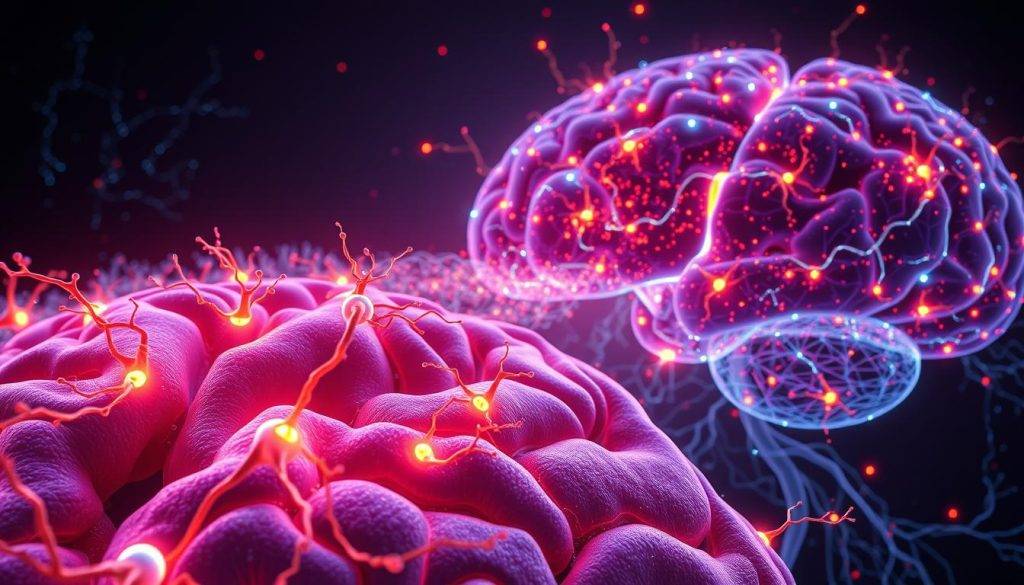
Neural Mechanisms and Synaptic Connections
Your 86 billion neurons communicate through synaptic connections — microscopic bridges that transfer information. When you learn a skill, these bridges multiply and strengthen. Like traffic increasing on a new road, repeated use makes neural pathways faster and more efficient.
Dr. Michael Merzenich’s research shows it takes just 30 hours of focused practice to create measurable changes in brain structure. This explains why daily language practice rewires speech centers, and why athletes develop precise motor control through repetition.
Structural versus Functional Plasticity
Brain plasticity operates through two complementary systems:
| Type | Purpose | Key Feature |
|---|---|---|
| Structural | Builds permanent skill highways | Grows new neurons & connections |
| Functional | Routes around damaged areas | Repurposes existing networks |
Stroke recovery demonstrates both systems working together. Patients regain movement not by healing damaged cells, but by creating new pathways around injured areas. Therapists use this principle when teaching alternate hand grips or walking patterns.
As neuroscientist Dr. Lara Boyd states: “Every time you learn, your brain changes — sometimes in ways we can see on brain scans.” Whether mastering chess strategies or recovering from brain injury, your neural networks adapt through the same fundamental rules.
Strategies and Techniques to Enhance Your Brain Health
Your brain’s resilience depends on daily habits that fuel its adaptability. Combining mental workouts with lifestyle choices creates a powerful synergy — like building a fortress against cognitive decline while boosting everyday performance.
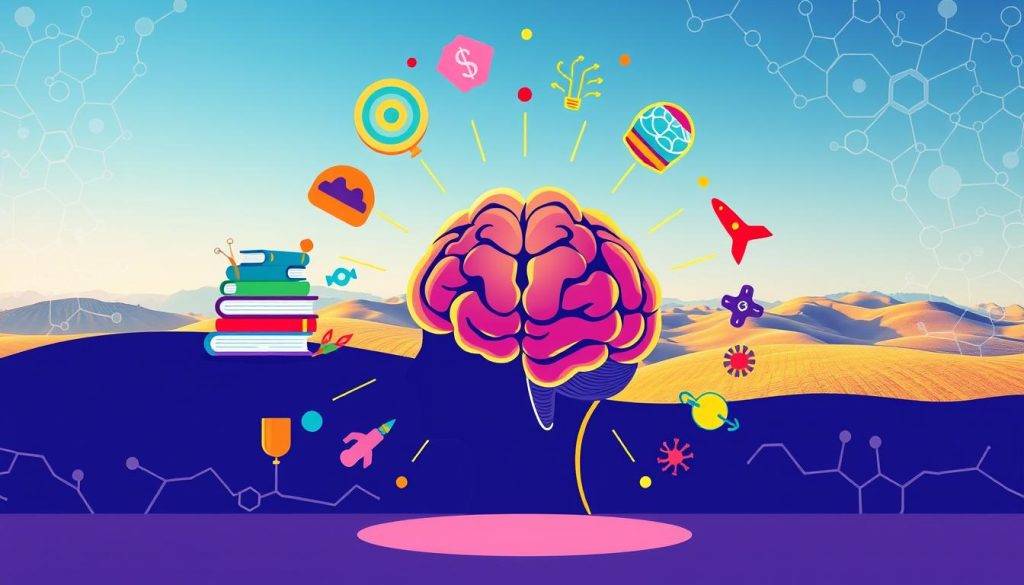
Daily Cognitive Exercises and Lifestyle Adjustments
Sleep acts as your brain’s nightly maintenance crew. During deep sleep stages, toxins like amyloid proteins get flushed out — a process linked to 50% lower Alzheimer’s disease risk. Dr. Matthew Walker’s research confirms: “Sleep is the Swiss Army knife of health — when sleep is deficient, your brain pays the price first.”
Physical exercise does double duty for your mind. Just 30 minutes of daily walking:
- Boosts blood flow to memory centers
- Triggers growth of new neural connections
- Reduces stress hormones by 40%
| Activity | Brain Benefit | Research Impact |
|---|---|---|
| 7-9 hours sleep | Toxin removal | 50% lower dementia risk |
| Daily puzzles | Memory strengthening | 34% faster recall |
| Social engagement | Emotional resilience | 72% lower depression rates |
Emerging research reveals that challenging activities rebuild cognitive reserves. Learning guitar at 60 or solving math puzzles at 25 both forge new neural pathways. As one study notes: “Mental flexibility thrives on novelty — the brain rewards curiosity with enhanced adaptability.”
Three lifestyle upgrades offer maximum impact:
- Prioritize sleep quality over quantity
- Mix aerobic exercise with skill-based movements
- Rotate mental challenges weekly
Neuroplasticity in Action: Real-Life Applications for Success
Your brain’s adaptability shines brightest when put to practical use. From classrooms to rehabilitation centers, science reveals how targeted activities forge lasting neural upgrades.
Language Learning as Neural Gymnastics
Mastering a new language reshapes speech centers and memory networks. Children’s rapid absorption of vocabulary demonstrates the “use it or lose it” principle in action. Adults achieve similar results through consistent practice — proof that age doesn’t limit the brain’s ability to build fresh pathways.
Movement as Medicine
Physical exercise does more than tone muscles. Stroke survivors often regain motor skills by training alternate neural routes. Emerging research shows rhythmic activities like dancing improve coordination 40% faster than standard therapies.
Novelty Fuels Growth
Painting, cooking unfamiliar recipes, or learning instruments challenge the brain to create new connections. COVID-19 recovery studies reveal 95% of patients restore smell/taste through scent-retraining — concrete evidence of sensory system adaptability.
These examples prove one truth: your mind thrives when challenged. Whether recovering from injury or pursuing personal growth, consistent effort writes new rules for what your brain can achieve.
FAQ
How does brain rewiring impact daily life?
Brain rewiring strengthens neural pathways through repeated mental or physical activities, enhancing skills like problem-solving, memory retention, and emotional regulation. This adaptability allows people to recover from injuries, learn new abilities, and improve cognitive performance in work or personal tasks.
Can adults develop new synaptic connections later in life?
Yes, adults can form new synaptic connections at any age. Activities like learning a language, practicing mindfulness, or mastering a musical instrument stimulate nerve cells to create fresh neural networks. Emerging research confirms the nervous system remains responsive to novel experiences, supporting lifelong growth.
What’s the difference between structural and functional plasticity?
Structural plasticity refers to physical changes in the brain—like new neurons or synaptic connections—while functional plasticity involves shifting tasks between brain regions. For example, after a stroke, undamaged areas may take over lost functions through targeted rehabilitation exercises.
What daily habits boost brain health?
Aerobic exercise increases blood flow to the hippocampus, improving memory. Puzzles, reading, or learning skills like coding challenge neural networks. Prioritizing sleep and omega-3-rich diets also supports synaptic pruning and neuron repair, maintaining cognitive sharpness.
How does language learning enhance neural flexibility?
Mastering vocabulary and grammar rules activates multiple brain regions, including the prefrontal cortex and Broca’s area. This cross-regional engagement strengthens communication between neurons, enhancing multitasking, creativity, and even delaying age-related cognitive decline.
Why is exercise critical for recovery after brain injury?
Physical activity triggers the release of brain-derived neurotrophic factor (BDNF), a protein that repairs damaged neurons and strengthens motor pathways. Studies show patients who combine physiotherapy with aerobic exercise often regain mobility and coordination faster.
Do creative activities like painting rewire the brain?
Yes. Creative tasks stimulate the default mode network, which governs imagination and introspection. Over time, these activities increase gray matter density in areas linked to emotional resilience and innovative thinking, proving art isn’t just therapeutic—it’s transformative for neural architecture.
























































